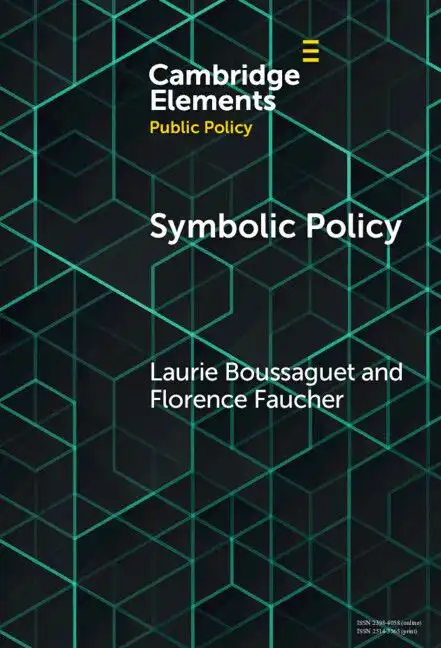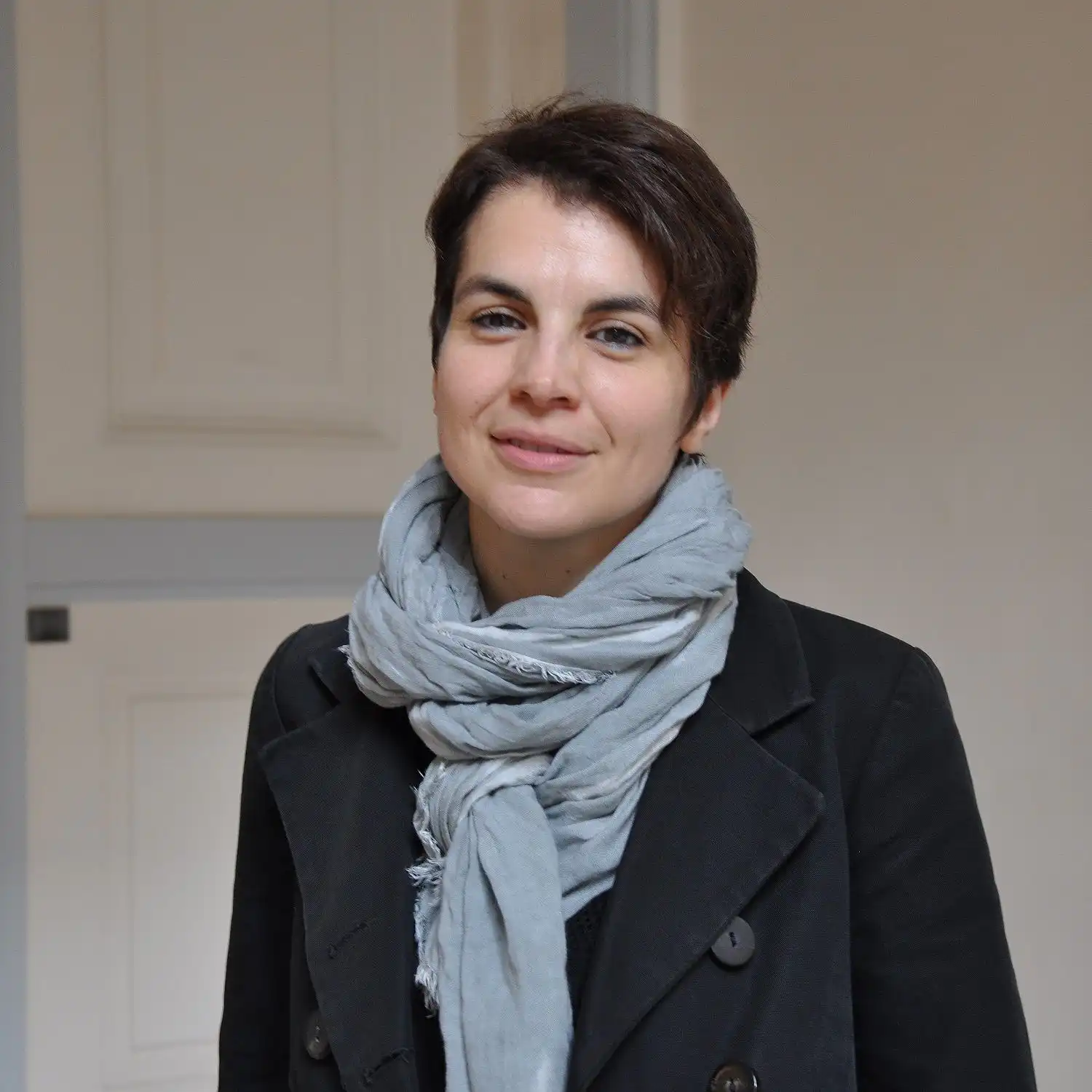Home>"All policies have a symbolic dimension". Interview with Laurie Boussaguet and Florence Faucher
06.12.2024
"All policies have a symbolic dimension". Interview with Laurie Boussaguet and Florence Faucher
Symbols are everywhere in politics. Yet, they tended to be overlooked in the study of public policy. What is the role of symbols in the policy process? Why is it important to consider them? How do you study symbolic policy? Answers by Laurie Boussaguet and Florence Faucher, who recently published Symbolic Policy (Cambridge University Press, 2025).
Video by Véronique Etienne, Centre for European Studies and Comparative Politics
Credits for additional pictures: Shonagon/Wikimedia Commons, Paolo Bona/Shutterstock, BreizhAtao/Shutterstock, Spech/Shutterstock, Joshua Sukoff/Shutterstock, Frederic Legrand - COMEO/Shutterstock
Laurie Boussaguet: A symbol can be anything, from a word to an object, a building, a song, a metaphor. The symbolic is a way to communicate very easily and directly with the citizens.
Florence Faucher: That is because a symbol is something that is attached to different meanings, associated to a culture of which both the citizens and their elites are part. And the context will determine which meaning is appropriate for the circumstances.
Even something as simple as a cloth with three colors, if we're talking about the French flag, has a diversity of cognitive and emotional dimensions attached to it. And according to context it means different things. A flag can be seen as representing France. It can be seen as representing the French revolution, representing the state. If it covers the coffins of soldiers, it represents the nation paying homage to the people who have defended it. But it can also be used in a completely different context, for instance at football or rugby games. And there, the emotions that are attached by a lot of people – they won't think about the army and war, they will think about the excitement of France beating England in a rugby game.
When we talk about symbolic policy, we don't mean that some policies are symbolic and others are not. In fact, we could say that we talk about symbolic policy to include all policies, because they all have a symbolic dimension.
L.B.: Sometimes decision makers use the symbolic purposefully, with a specific aim.
For instance, when we studied the use of the symbolic in crisis management, it was really important because it enabled to fulfill some important tasks, such as to legitimize the decision makers and their decisions, but also to reassure the population and create or maintain unity.
For example, we studied the responses of the French government to the terrorist attacks in Paris. One of the responses was to increase the presence of the army in the streets. Of course, it was a security policy. But at the same time, it conveyed a very important message to the population: that you can be reassured because the state is present, the state knows what to do. The army became the symbol of the state in the street to reassure the population. That was an important symbolic message.
F.F.: At the time of COVID, the metaphors and the examples that were used by President Macron were clearly designed to make French people think about moments of solidarity, the war, standing up together.
It's also one of the rare examples where we can measure the effects that the speech had. Fortuitously, our colleagues at the CEVIPOF had a panel survey. One of the questionnaires was run on the day Macron gave his second speech. And by comparing the responses of those who responded before and after, one can see that their responses to whether they are going to stand further apart from other people, whether they're going to wash their hands, whether they have understood the situation, clearly changed.
The symbolic is always present in policy but in some cases the policy makers have not thought carefully about the meaning that is going to be decoded by the population. When Macron decided to introduce a carbon tax, a number of people responded because they thought that the people who were going to be targeted are those who own cars, those who are dependent on their cars, whilst the decision was taken by Parisian elites who don't have cars, who can use public transport and so on. [The former] felt therefore directly targeted and victimized by a policy, which was not the intention of the policy makers.
L.B.: This symbolic dimension is really crucial and it's something neglected by the policy analysis because it's the dialogue between decision makers and citizens' representations. If we miss this conception of the symbolic, we cannot understand the reaction of the public to a particular policy.
If we want to study the symbolic dimension, we need first of all to have a larger conception of what is a policy. A policy is not simply a legal text and official speeches, all the elements that are usually analyzed when we study policy. We need to also include all the staging, the performances of the decision makers. In terms of data collection, we need to study all the decision makers' agendas, the staging of the speeches, all the site visits, even if no word is pronounced, all the gestures, the body language... They all convey messages to citizens.
For example, during the pandemic, [Italian] Prime Minister Conte did some speeches in the courtyard of the Palazzo Chigi [in Rome], wearing a mask. That wasn't necessary from a sanitary point of view, because he was alone, it was outside, he was far from the journalists. So it was not necessary to wear a mask, yet it was important because it enabled to support the content of his speeches about the necessity to wear the mask.
Secondly, if we want to understand the symbolic work by decision makers, we need to try to understand what their intentions are. For that purpose, the ideal would be to be able to do interviews with decision makers and their entourage, in order to understand their conception of the use of the symbolic and what messages they want to convey.
F.F.: We started our research by studying how the French government responded to terrorist attacks in 2015 and we were able to interview the prime minister, the minister of justice, various collaborators. Through these interviews we were able to actually show how they were intending to use the symbolic. Some of the use of the symbolic was routine, for instance the organization of ceremonies of homage towards police personnel victim of terrorists. But some of them had to be invented, created and adapted to the situation, such as the large march.
L.B.: If it's not possible [to do interviews], we have to cross check data, to be able to find these intentions in another way. For example, if we want to study a recent Trump policy, of course we won't be able to meet Trump to do an interview. So we can use all the speeches that he pronounced, we can analyze his first term, his electoral campaign, all his statements in the press, all his visits, his gestures, his body language, to understand what his intentions are. All these elements need to be studied to really take into account and bring back into the analysis the symbolic dimension.
About the book

Symbolic Policy, by Laurie Boussaguet and Florence Faucher, Cambridge University Press (series Cambridge Elements - Public Policy).
Published online 30 November 2024. Print edition: January 2025.
DOI: 10.1017/9781009290975
In this book, Laurie Boussaguet and Florence Faucher demonstrate how symbols shape citizens' representations thanks to their ability to combine meanings and to stimulate emotional reactions. Using crisis management as their analytical lens, they focus on two case studies: governmental responses to the Covid-19 crisis in Europe in 2020 and to terrorist attacks in France in 2015. The authors show how the symbolic enables leaders to claim legitimacy for themselves and their decisions, while fostering feelings of reassurance, solidarity, and belonging. All politicians use the symbolic, whether consciously or otherwise, but what they choose to do varies and is affected by timing, the existence of national repertoires of symbolic actions and the personas of leaders.
About the authors

Florence Faucher is a Full Professor of political science at Sciences Po and the Director of the Centre for European Studies and Comparative Politics. She is Associate Fellow at Nuffield College and in the Department of Politics and International Relations at the University of Oxford. Her research has developed in several strands, connected by an interest in understanding the transformations of modes of doing politics in contemporary Europe. She has extensively worked on political parties in France and in the UK (green parties, centre right and centre left parties). She argues that an «anthropological imagination» can renew and stimulate analyses of contemporary political institutions and practices.

Laurie Boussaguet is a Full Professor of political science at the University of Rouen and at the the Centre for European Studies and Comparative Politics (currently on leave) and a visiting fellow at the Robert Schuman Centre for Advanced Studies at the European University Institute (EUI) in Florence, Italy. Her research focuses on agenda-setting, comparative politics, European governance, citizens’ participation, and gender. Throughout her research, she consistently addresses the link between policy and politics, exploring the dynamic between those in power and the citizens they serve.
